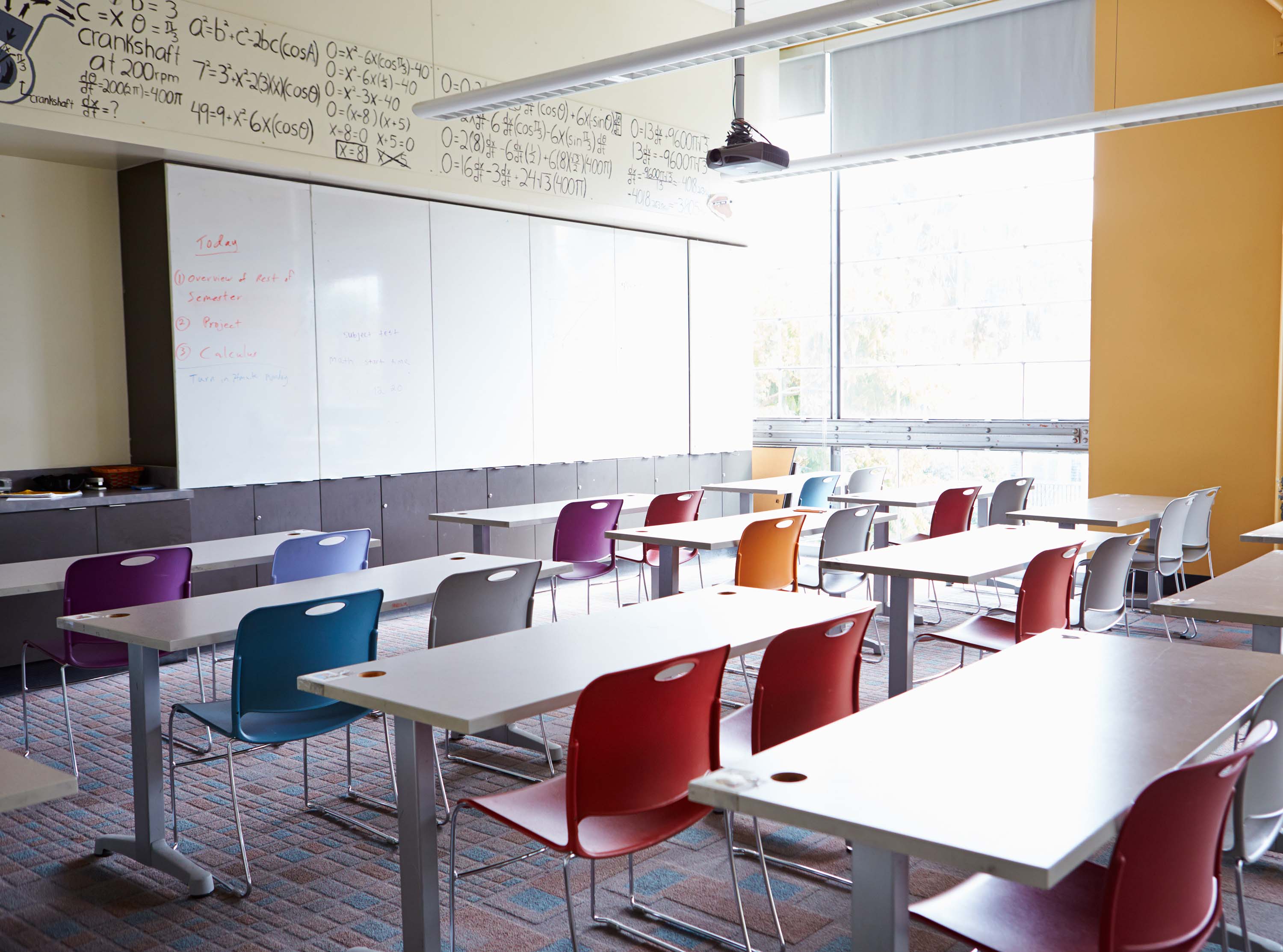March 2020
Research Brief: Challenges and Priorities Facing Public Schools in Louisiana: Views of Superintendents and Principals
March 23, 2020
 According to a recent article in US News and World report, Louisiana ranks very near
the bottom in the US with respect to the quality of education offered to its citizens.1 These rankings are based on a range of indicators, including student performance
on standardized tests.
According to a recent article in US News and World report, Louisiana ranks very near
the bottom in the US with respect to the quality of education offered to its citizens.1 These rankings are based on a range of indicators, including student performance
on standardized tests.
For years the Gallop Poll ranked Louisiana’s K12 education system at or near the bottom. However, recent data show positive trends on some test scores. For example, Louisiana 8th graders have led the nation with regard to growth on the mathematics section of the National Assessment of Educational Performance2 .
Key Findings
As with other K12 systems in the US, Louisiana schools suffer from a shortage of effective teachers and support staff
Frequent curriculum changes, pressures from the accountability system, and low salaries lead many experienced teachers to leave the profession
Changes in the student population, particularly decreasing valuation of school, increasing special needs, including mental health, coupled with a lack of autonomy for educators make the work environment of educators difficult
Positive trends often reflect the investments policymakers have made in the State’s education system. Louisiana is a national leader with regard to the charter school movement, the creation of innovative pathways to teaching, the sophistication of its school and teacher accountability program and its adoption and implementation of curriculum innovations, to name a few.3 However, reviews on the impact of the state’s K12 initiatives have been mixed.4 For example, a recent study of the Louisiana school choice voucher program raised questions about the effectiveness of the program and its impact on the education provided to low-income and minority youth.5 A voice heard infrequently in these debates is that of the educators responsible for the day-to-day delivery of the state’s education.
Louisiana, like the rest of the country, needs well-prepared principals and educators. The need for quality educators is felt more strongly in rural districts.6 Districts must invest time, effort, and resources to replace (due to factors such as retirement, burnout, etc.) educators and ensure that there are certified professionals leading students. In 2016, this cost could range from $4,400 in a rural district to $18,000 in a large urban district.7 Louisiana Department of Education reported 5,301 teachers exiting the classroom in 2017-18.8 A reasonable estimate total cost to the state of Louisiana is approximately $22 million. For this expenditure there is no noticeable improvement in student opportunities for equitable education.
Executive Summary
This report presents results of a survey of school superintendents and principals in Louisiana. The survey was designed to identify challenges and research priorities of school leaders in the state. Respondents were asked to rank the importance of specific challenges in four areas (School Leaders, Teachers and Instructional Staff, Students, and Facilities and Resources) and to explain or comment on the nature of the challenge. More than half of Louisiana superintendents and more than one-quarter of principals responded to this survey. Noteworthy is that 54% of respondents served rural communities.
School leaders identified the most significant challenge as unavailability of qualified personnel, specifically principals and teachers. Principals noted a significant shortage of effective personnel, especially certified educators. This shortage was attributed to a general decline in the number of candidates entering the teaching profession and to a variety of issues associated with teaching.
[Superintendents and principals] said that low pay, lack of autonomy, increasing high stakes accountability, mandated curriculum changes, and student related challenges encouraged experienced educators to leave the profession and discouraged prospective teachers from entering the profession.
The result is that in many schools teachers have large classes, little autonomy, and a growing student population that increasingly brings mental health and other challenges that educators may not have been trained to address. In response, administrators are often left to hire inexperienced teachers, many of whom are graduates of alternative certification programs which rarely equip them with the pedagogical skills to be effective without significant support.
In addition to a shortage of effective teachers, administrators told of financial challenges with implications for support personnel, space, and frequently, of deteriorating physical facilities. These results raise questions about both the intrusiveness of state policies and their effectiveness, and of the ability of teacher preparation programs to produce enough professional educators who are “ready” for the student population in the state. The results offer policymakers opportunities to improve the learning environments and experiences that students and educators face during the school day. Identifying policies which contribute to professionalizing education will address symptoms of the difficulties in recruiting and retaining diverse and well-prepared educators.
Policy areas identified in this research include improving curricular autonomy, high-stakes accountability demands, and responsiveness to changing student populations.

Summaries
Principals and superintendents both identify the supply of qualified teachers as a major challenge. This is related to the overall decline in enrollment rates in teacher preparation programs, but also connected to work the environment for educators.
They describe an environment in which building level administrators have decreasing levels autonomy with respect to the curriculum, ever increasing high stakes accountability demands, and a significant change in the student population.
These factors lead to increasing levels of job dissatisfaction and problems with both recruitment and retention of effective educators.
Principals and superintendents note that students are increasingly showing evidence of mental health issues and family environments in which education is not valued.
This results in problems related to attendance, behavior, and engagement.
The challenge these educators note is that teachers are not prepared to address these evolving challenges and the result is a disruption to educational processes.
Few superintendents responded to the request for research priorities in this area. Among principals, research priorities focused on school management and student issues (see Table 5.2.1). The former included teacher and staff morale and effectiveness, increasing parental engagement, and effective use of school data. Student priorities focused on strategies for addressing the needs of students and promoting student engagement.
References
- Ziegler. “Education rankings measuring how well states are educating their students,” US News. (2020). https://www.usnews.com/news/best-states/rankings/education
- Louisiana Department of Education. “Superintendent of Education releases statement regarding Louisiana students’ achievements on National Assessment of Educational Progress,” (October, 2019). https://www.louisianabelieves.com/docs/default-source/links-for-newsletters/louisiana-2019-naep-results-summary.pdf?sfvrsn=bd999a1f_2
- Kaufman et al. Raising the Bar: Louisiana’s Strategies for Improving Student Outcomes, Research Report. RR-2303-BRAF. (2018).
- Baird et al. “What Other States Can Learn from Louisiana’s Ambitious Efforts to Reshape Its Education System.” (2019).
- Wolf et al. “How has the Louisiana Scholarship Program Affected Students? A Comprehensive Summary of Effects after Four Years.” (2019). http://www.uaedreform.org/wp-content/uploads/LSP4-Policy-Brief-SCDP.pdf
- Latterman and Steffes. “Tackling teacher and principal shortages in rural areas.” National Conference of State Legislatures. (2017).
- Sutcher, Darling-Hammond, and Carver-Thomas. “A coming crisis in teaching? Teacher supply, demand, and shortages in the US.” (2016): 499-534.
- Louisiana Department of Education. “2017-2018 Educator Workforce Report.” (nd).
- SAS Institute. Getting started with SAS test miner 13.2. SAS Institute (2012).
Written by:
Dr. Eugene Kennedy & Dr. Richard Baker